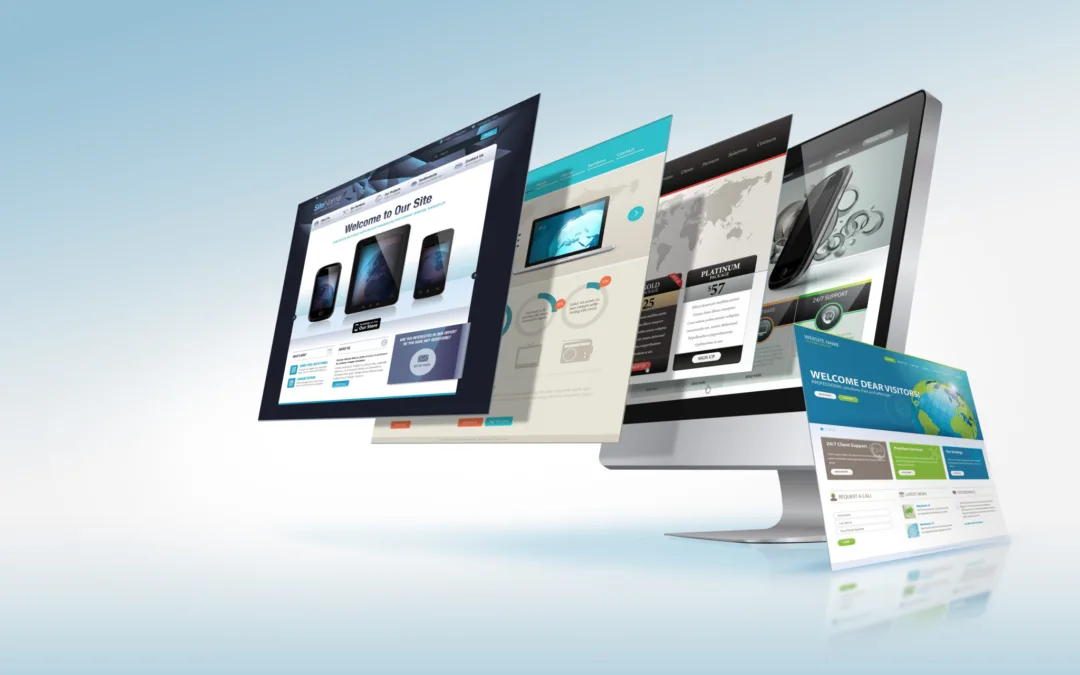Why Every Business Needs a Custom Web Design for Maximum Impact
Why Every Business Needs a Custom Web Design for Maximum Impact
Blog Article
Comprehending Individual Experience: Trick Principles for Effective Web Layout
In the realm of website design, recognizing individual experience (UX) is paramount to creating platforms that not just draw in yet likewise preserve customers. Trick concepts such as intuitive navigation and reliable responses mechanisms play vital duties in cultivating customer complete satisfaction. In addition, factors to consider for ease of access ensure that all users can engage with the material seamlessly. The nuances of visual style and the value of repetitive screening usually continue to be ignored. As we discover these fundamental components, it comes to be apparent that understanding UX is not just an alternative but a requirement for success. What are the ramifications of overlooking these principles?
Importance of Individual Experience

In the realm of web style, one can not ignore the significance of individual experience (UX) as an essential component that straight influences the success of an internet site. When customers experience a intuitive and engaging interface, they are extra likely to discover the content, convert right into clients, or share their experiences with others.
In addition, the value of UX extends past simple aesthetics. It incorporates the total capability of a site, ensuring that navigating is smooth and information is easily obtainable. Websites that focus on UX are usually regarded as more reputable and credible, which can have a profound influence on conversion rates. In comparison, poor UX can result in disappointment, leading to high bounce rates and lost possibilities.
Ultimately, investing in customer experience is not just a design selection; it is a calculated choice that can separate a brand name in a jampacked marketplace. By concentrating on UX, services can produce significant interactions that reverberate with users, paving the means for sustained success in the electronic landscape.
Functionality Concepts
Efficient internet design depends upon the application of key functionality concepts that make certain a website is both practical and straightforward. Central to these concepts is the idea of intuition, where individuals can navigate the site easily without considerable guideline. Clear navigating frameworks, consisting of regular designs and well-labeled menus, enhance this user-friendly experience, permitting customers to locate information quickly.

Consistency is equally crucial; preserving uniformity in layout elements, terms, and procedures throughout the site helps to decrease confusion. Users must not have to relearn just how to communicate with different areas of the internet site.
Furthermore, mistake avoidance and recovery are crucial for use. Web sites should be created to minimize the opportunity of individual mistakes, and when blunders occur, positive and clear mistake messages need to guide users towards resolution.
Availability Considerations
Making certain ease of access in website design is paramount for creating comprehensive digital experiences that deal with all customers, consisting of those with specials needs. Access factors to consider entail making websites that suit diverse requirements, allowing individuals with visual, auditory, cognitive, or electric motor problems to browse and connect efficiently.
To accomplish this, internet designers should stick to article established guidelines, such as the Web Web Content Access Guidelines (WCAG) These standards offer a framework for making material perceivable, operable, understandable, and durable. Key practices include making certain sufficient shade comparison, offering message options for non-text content, and ensuring keyboard navigability.
Furthermore, semantic HTML should be utilized to boost screen visitor compatibility, allowing customers with visual disabilities to comprehend the framework and significance of content without effort. web design. Offering clear, succinct instructions and using uncomplicated language can better enhance functionality for individuals with cognitive handicaps
Routine accessibility screening, involving real customers with specials needs, is vital to determine barriers and enhance the customer experience. By prioritizing ease of access, internet designers not only abide with lawful criteria yet likewise promote an even more equitable electronic landscape, ultimately benefiting everybody through enhanced functionality and engagement.
Visual Design Aspects
A myriad of aesthetic design components plays a critical function fit customer assumptions and experiences on a site. These aspects consist of color pattern, typography, whitespace, format, and imagery, each contributing to the total aesthetic appeal and efficiency of a website.

Color design stimulate emotions and can influence customer actions; as an example, cozy colors may produce a feeling of necessity, while awesome shades typically promote peace. Typography, on the other hand, influences readability and can develop a brand name's individuality - web design. The selection of font design and size have to align with the internet site's goals and target audience
Imagery, consisting of symbols and images, enhances storytelling and can significantly impact customer interaction. High-grade visuals produce a sense of expertise, while poor-quality pictures may take away from the user experience.
Layout and whitespace are similarly crucial, as they assist users with the web content. A well-structured layout helps customers discover information rapidly, while adequate whitespace protects against clutter, assisting in a more satisfying searching experience.

Checking and Iteration
Customer testing and iteration are fundamental you can try here parts of a successful internet design procedure. User testing entails observing how real individuals communicate with a site, identifying functionality issues, and understanding individual habits.
Model, on the other hand, is the process of improving the style based on the understandings obtained from customer testing. By making incremental adjustments and re-evaluating the design, groups can boost capability, boost appearances, and optimize individual interaction. This intermittent approach cultivates a society of continual renovation, allowing developers to adjust to user needs and arising trends efficiently.
Moreover, incorporating both customer screening and version into the style procedure leads to even more enlightened decision-making and inevitably leads to an extra user-centered item. website here By embracing these concepts, web developers can create a lot more user-friendly, engaging, and effective experiences that reverberate with their target market, ultimately driving greater individual contentment and retention.
Final Thought
In conclusion, user experience is an essential element of efficient web design, including use, availability, and aesthetic considerations. Continual screening and version serve as important processes for addressing and determining user discomfort points, making certain that internet layouts stay adaptable to progressing needs.
In the world of internet style, understanding individual experience (UX) is paramount to producing platforms that not just draw in but additionally maintain users.In the world of web design, one can not undervalue the significance of individual experience (UX) as a pivotal element that directly influences the success of a website. Individual screening entails observing how genuine customers communicate with a web site, determining functionality concerns, and comprehending individual actions.In conclusion, customer experience is a crucial element of efficient internet layout, incorporating functionality, access, and aesthetic considerations. Continual testing and model serve as important procedures for determining and resolving user pain factors, ensuring that internet layouts stay adaptable to evolving demands.
Report this page